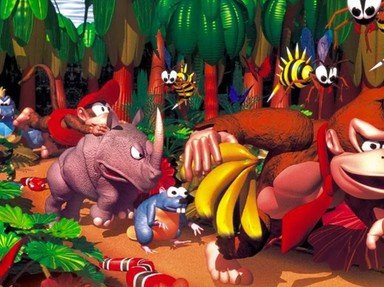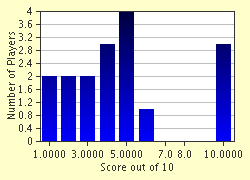Quiz Answer Key and Fun Facts
1. After failing to successfully reach the American market with their earlier games, which company finally hit the mark with "Donkey Kong"?
2. "Donkey Kong" was unique in being the first arcade game to begin with a cutscene to set up a storyline for the action. The villain gorilla (Donkey Kong) snatched the damsel in distress and climbed to the top of... what?
3. After the opening scene, you were ready to begin! What controls did you have at your disposal?
4. There are four stages that our hero (Jumpman/Mario) had to conquer in order to complete the storyline and rescue the damsel in distress (Lady/Pauline). In the first stage, you had to make your way up a series of platforms until you reached the top, all the while avoiding or smashing what objects being thrown by Donkey Kong?
5. Your Mario character could pick up three bonus items that belonged to Pauline on each level. Which of these was NOT one of them?
6. In the first level of play there were only two screens (or boards) to play. Advancing to the second level added a third board, and level three added a fourth board. Which of these was not the accepted name of one of these boards?
7. Whatever level you were playing, the final screen (board) was always the same. Donkey Kong has reached the top, and Mario must make the structure fall out from beneath him by removing rivets from the beams. How many rivets had to be removed to defeat Donkey Kong?
8. When the new board appeared in the second level, what did Donkey Kong throw at Mario to impede his (your) progress?
9. In the board with the conveyor belts (first appearing on Level Three), your Mario had to avoid (or smash) obstacles and dodge fireballs, all while contending with a moving surface that affected his speed. What did Donkey Kong do in this level to affect Mario's progress?
10. "Donkey Kong" has no end to the game, theoretically, and new records are still being achieved in competitions.
Source: Author
reedy
This quiz was reviewed by FunTrivia editor
kyleisalive before going online.
Any errors found in FunTrivia content are routinely corrected through our feedback system.


